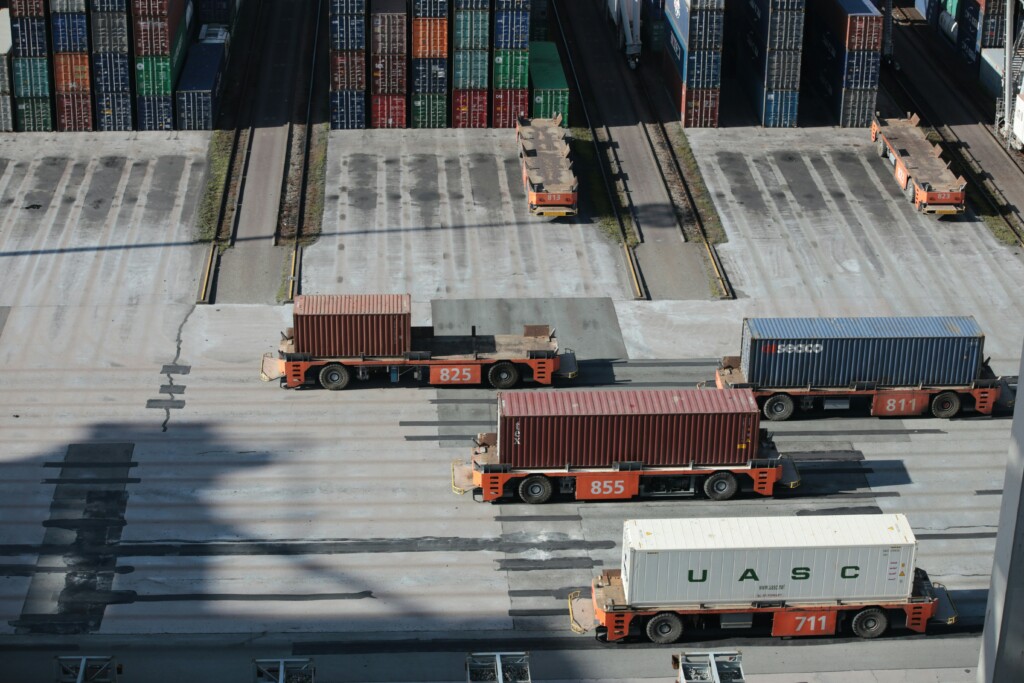In the vast web of global supply chains, where goods traverse continents and industries interconnect, there exists a shadowy realm that poses a significant threat: freight crime. From theft and hijacking to fraud and counterfeiting, freight crime manifests in various forms, jeopardizing not only the integrity of goods in transit but also the safety of supply chain networks worldwide.
If you are in the Los Angeles area you likely heard the recent news story about an individual arrested on suspicion of dealing $5 million worth of stolen Nike merchandise. Authorities were tipped off after the individual was seen delivering the stolen Nike products to a Hawthorne warehouse. In fact, 1990, the Los Angeles, County Sheriff’s Department started a new cargo theft investigative unit called Cargo CATs, the Cargo Criminal Apprehension Team and it is still in place today and working commercial cargo crime daily. So what can you do to avoid falling victim?
Understanding Freight Crime
Freight crime encompasses a wide spectrum of illicit activities targeting cargo during transit or while in storage. These crimes are often meticulously planned and executed, exploiting vulnerabilities in supply chain logistics and infrastructure. Common types of freight crime include:
- Cargo Theft: Criminals target trucks, warehouses, or cargo storage facilities to steal goods, ranging from consumer electronics and pharmaceuticals to food and beverages.
- Hijacking: Armed assailants intercept trucks on the road, forcibly take control of the vehicle, and steal the cargo, posing a significant threat to the safety of drivers and other road users.
- Fraud and Documentation Falsification: Fraudulent schemes involve the manipulation of paperwork, such as falsifying shipping documents or misrepresenting cargo contents, leading to financial losses and regulatory violations.
- Counterfeiting: Criminal organizations produce counterfeit goods, ranging from luxury items to automotive parts, infiltrating legitimate supply chains and compromising product quality and consumer safety.
Impacts of Freight Crime
The ramifications of freight crime extend far beyond immediate financial losses. They undermine the trust and reliability of supply chain partners, disrupt business operations, and pose risks to public safety and national security. Some key impacts include:
-
- Financial Losses: Stolen cargo and associated costs, including insurance premiums, investigation expenses, and potential legal liabilities, result in significant financial losses for businesses.
-
- Reputation Damage: Incidents of cargo theft or fraud tarnish the reputation of companies involved, eroding customer trust and confidence in their ability to safeguard goods.
-
- Supply Chain Disruptions: Cargo theft and hijacking disrupt the flow of goods, leading to delays in deliveries, inventory shortages, and increased operational costs for businesses.
-
- Safety Concerns: Hijacking incidents pose grave risks to the safety of drivers and bystanders, escalating into violent confrontations with potentially fatal consequences.
- Safety Concerns: Hijacking incidents pose grave risks to the safety of drivers and bystanders, escalating into violent confrontations with potentially fatal consequences.
Mitigating Freight Crime Risks
To combat the threat of freight crime and safeguard supply chains, proactive measures and collaborative efforts are essential. Here are some strategies to mitigate freight crime risks:
-
- Enhanced Security Measures: Implement robust security protocols, including GPS tracking systems, tamper-evident seals, and secure parking facilities, to deter theft and monitor cargo movements in real-time.
- Employee Training and Awareness: Educate employees about the risks of freight crime and the importance of adhering to security procedures, such as verifying identities of unfamiliar individuals and reporting suspicious activities.
- Technology Integration: Embrace innovative technologies, such as blockchain and IoT (Internet of Things) devices, to enhance transparency, traceability, and authentication across the supply chain, reducing the vulnerability to fraud and counterfeiting.
- Collaborative Partnerships: Foster collaboration among supply chain stakeholders, including manufacturers, logistics providers, law enforcement agencies, and industry associations, to share intelligence, coordinate responses, and develop best practices for combating freight crime.
- Regulatory Compliance: Ensure compliance with regulatory requirements and industry standards related to cargo security, documentation integrity, and risk management, mitigating the legal and reputational risks associated with non-compliance.
Conclusion
Freight crime poses a formidable challenge to the integrity and resilience of global supply chains, demanding a multifaceted approach to combat its proliferation effectively. By understanding the nature of freight crime, its impacts, and adopting proactive measures to mitigate risks, businesses can fortify their supply chain defenses and uphold the trust and reliability that underpin commerce in the modern world.
Best Yet Express feels fortunate to have not fallen victim to such crimes but we also take all the precautionary steps to safeguard our operation and the freight we transport. We utilize GPS tracking systems in all vehicles, never allow drivers to park at outside facilities but instead bring all trucks and cargo back to our facility daily where we have RFID key fobs for all employees, security gates and fencing surrounding the entire facility and 24 hour surveillance and alarm systems as well as maintaining close partnerships with clients. In fact, we first started blogging about this topic in 2013.
In the relentless pursuit of sure and sustainable supply chains, vigilance, collaboration, and innovation are the cornerstones of resilience against the ever-evolving threats of freight crime.
Remember, safeguarding the journey of goods from origin to destination is not just a business imperative; it’s a commitment to ensuring the safety, security, and trust of stakeholders across the supply chain ecosystem.
Together, let’s navigate the complexities of freight crime and forge a path towards a safer, more resilient future for global trade. Lets get you moving with a safe and reliable carrier today!








